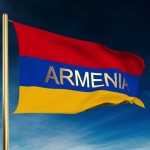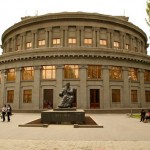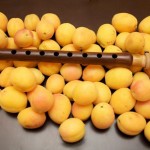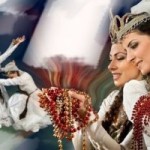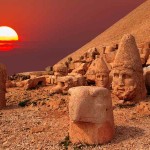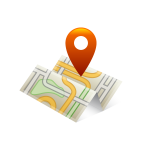
Armenian Language
Comment are off
HISTORICAL ROOTS
The Armenian language is one of the oldest languages in the world, and is part of the Indo-European family of languages, which includes all Latin, Germanic (including English), Celtic, Indian, Iranian, Slavic, Hellenic languages and others. Armenian language is part of the Thrace-Phrygian subfamily that also included Phrygian (spoken in Western Anatolia of Antiquity) and Thracian (spok en in the Balkans of Antiquity). Originally the ancestors of the Armenians, the inhabitants of the kingdom of Urartu, did not speak Armenian. Rather, they spoke an indigenous language that historians cannot classify as either Indo-European or Semitic, although one theory suggests that the Urartu language is related to the language of the present-day Georgians and to other languages of the Caucasus. When the Indo-European tribe that spoke Armenian immigrated from the West to the Urartu highlands in the 7th or 6th century BC, the native Urartu and Armenian languages co-existed side-by-side. It is suggested that the elite spoke Armenian, while the masses still spoke the native Urartu, but gradually Armenian took over and within the centuries that followed, Armenian was the only language spoken. The language nevertheless incorporated many non-Indo-European native Urartu elements and words. Later many “loan words”, notably from Persian, and more recently from Arabic, Russian and Turkish found their way in the language, which is a standard phenomenon when different languages interact. In fact, so many Persian words had entered the language that up until the end of the 19th century, many linguists considered Armenian language to be a dialect of Persian, until it was established that Armenian was an independent branch.
en in the Balkans of Antiquity). Originally the ancestors of the Armenians, the inhabitants of the kingdom of Urartu, did not speak Armenian. Rather, they spoke an indigenous language that historians cannot classify as either Indo-European or Semitic, although one theory suggests that the Urartu language is related to the language of the present-day Georgians and to other languages of the Caucasus. When the Indo-European tribe that spoke Armenian immigrated from the West to the Urartu highlands in the 7th or 6th century BC, the native Urartu and Armenian languages co-existed side-by-side. It is suggested that the elite spoke Armenian, while the masses still spoke the native Urartu, but gradually Armenian took over and within the centuries that followed, Armenian was the only language spoken. The language nevertheless incorporated many non-Indo-European native Urartu elements and words. Later many “loan words”, notably from Persian, and more recently from Arabic, Russian and Turkish found their way in the language, which is a standard phenomenon when different languages interact. In fact, so many Persian words had entered the language that up until the end of the 19th century, many linguists considered Armenian language to be a dialect of Persian, until it was established that Armenian was an independent branch.
SPECIAL AND UNIQUE LANGUAGE
What makes Armenian language unique is the special position it occupies in the family of Indo-European languages, spoken today in almost all of Europe, most of Eurasia, in Iran and the Indian sub-continent. All Indo-European languages were originally spoken in a specific part of the world, which historians refer to as the “Indo-European homeland”. The exact location is unclear, but the area stretching from the North of the Black Sea to the North of the Caspian Sea is one theory. The distinct branches started to spilt from the main language over many centuries. Eventually, there were Western branches (Germanic, Latin, Celtic, Slavic, Greek, etc.) and Eastern branches (Persian, Sanskrit and other Iranian and India languages). Armenian has the unique characteristic, along with Hittite (an Indo-European language now extinct) of being a language that is equally related to both the Western branches of the Indo-European family and the Eastern branches, making Armenian the bridge between East and West in the family of Indo-European languages. Armenian is considered by many scholars as the intermediary between Greek and Persian, hence its originality derived from having a dual Western and Eastern legacy.
location is unclear, but the area stretching from the North of the Black Sea to the North of the Caspian Sea is one theory. The distinct branches started to spilt from the main language over many centuries. Eventually, there were Western branches (Germanic, Latin, Celtic, Slavic, Greek, etc.) and Eastern branches (Persian, Sanskrit and other Iranian and India languages). Armenian has the unique characteristic, along with Hittite (an Indo-European language now extinct) of being a language that is equally related to both the Western branches of the Indo-European family and the Eastern branches, making Armenian the bridge between East and West in the family of Indo-European languages. Armenian is considered by many scholars as the intermediary between Greek and Persian, hence its originality derived from having a dual Western and Eastern legacy.
DIALECTS AND VARIANTS
All languages evolve and are made of many dialects, and Armenian is not an exception. Armenians in Karabakh have a different dialect than Armenians in Yerevan, while Armenians in Persia speak Armenian with some phonetic characteristics associated with Persian. The two main variants today are “Western Armenian”, spoken mainly by Armenians raised outside of Armenia and “Eastern Armenian” spoken by Armenians raised in Armenia, Iran and the states of the ex-USSR. There are many historic reasons for this division in two variants, namely the establishment of a Western-oriented Armenian kingdom in Cilicia in the Middle Ages, away from the Armenian homeland, an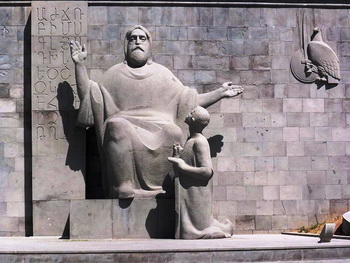 d more recently, attempts by the USSR to assimilate Armenians. There are notable differences between the two, especially on the exact pronunciation of consonants, although both have differences with traditional Armenian. In short, the pronunciation of Eastern Armenian is more accurate, while the orthography and spelling of Western Armenian is more in line with the original Armenian alphabet, as defined by its inventor Mesrop Mashtots.
d more recently, attempts by the USSR to assimilate Armenians. There are notable differences between the two, especially on the exact pronunciation of consonants, although both have differences with traditional Armenian. In short, the pronunciation of Eastern Armenian is more accurate, while the orthography and spelling of Western Armenian is more in line with the original Armenian alphabet, as defined by its inventor Mesrop Mashtots.
ARMENIAN ALPHABET
Armenians established their own Alphabet in the 5th century AD, with 38 total letters (36 originally with two added in the Middle Ages). An Armenian cleric named Mesrop Mashtots was the source of this development. Armenian characters are based on the Greek Alphabet, and the Pahlavi script (derived from the Aramaic alphabet) of ancient Persia, given that Greek and Persian were the two prominent languages spoken in the region around Mashtots’ time. The Armenian alphabet has a feature that only few other languages in the world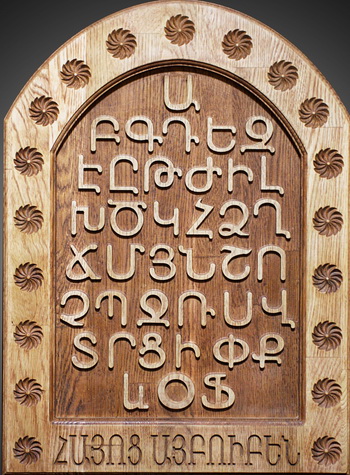 share, namely the division of consonants in three categories rather than two. Most languages and alphabets have “voiced” consonants (such as B, D, V, G) and “voiceless” consonants (such as P, T, F, K). Armenian also has a third category, which we may refer to as “soft voiceless” consonants. These are sounds pronounced softly without any aspiration. One such sound, for example, is a soft “T” that almost sounds like a “D”, even though it is different than a normal “D”. Western Armenian did away with this feature and today has two categories of consonants, like other languages. Another feature of the Armenian alphabet is the simple representation of combined sounds. For example, there is only one character for “sh” and only one for “tch”. The same applies for other sounds (“ts”, “dj”) that other alphabets produce by combining 2 or 3 letters. All these features, and the beautiful design of the individual Armenian characters, make the Armenian alphabet a truly unique and original innovation that Armenians take pride in.
share, namely the division of consonants in three categories rather than two. Most languages and alphabets have “voiced” consonants (such as B, D, V, G) and “voiceless” consonants (such as P, T, F, K). Armenian also has a third category, which we may refer to as “soft voiceless” consonants. These are sounds pronounced softly without any aspiration. One such sound, for example, is a soft “T” that almost sounds like a “D”, even though it is different than a normal “D”. Western Armenian did away with this feature and today has two categories of consonants, like other languages. Another feature of the Armenian alphabet is the simple representation of combined sounds. For example, there is only one character for “sh” and only one for “tch”. The same applies for other sounds (“ts”, “dj”) that other alphabets produce by combining 2 or 3 letters. All these features, and the beautiful design of the individual Armenian characters, make the Armenian alphabet a truly unique and original innovation that Armenians take pride in.

